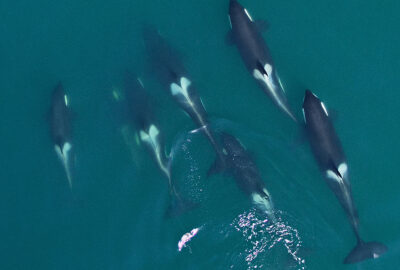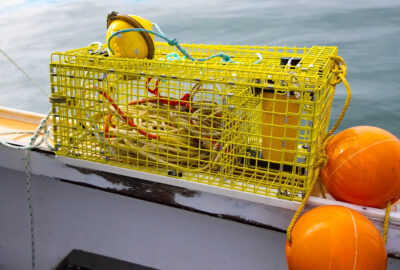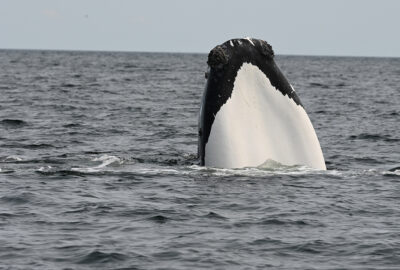Protections for Right Whales Remain Essential to Continue Population’s Gradual Increase
As right whale numbers slowly rise, scientists stress the need for continued collaboration to monitor and protect these critically endangered animals throughout their range.
By New England Aquarium on Tuesday, October 21, 2025

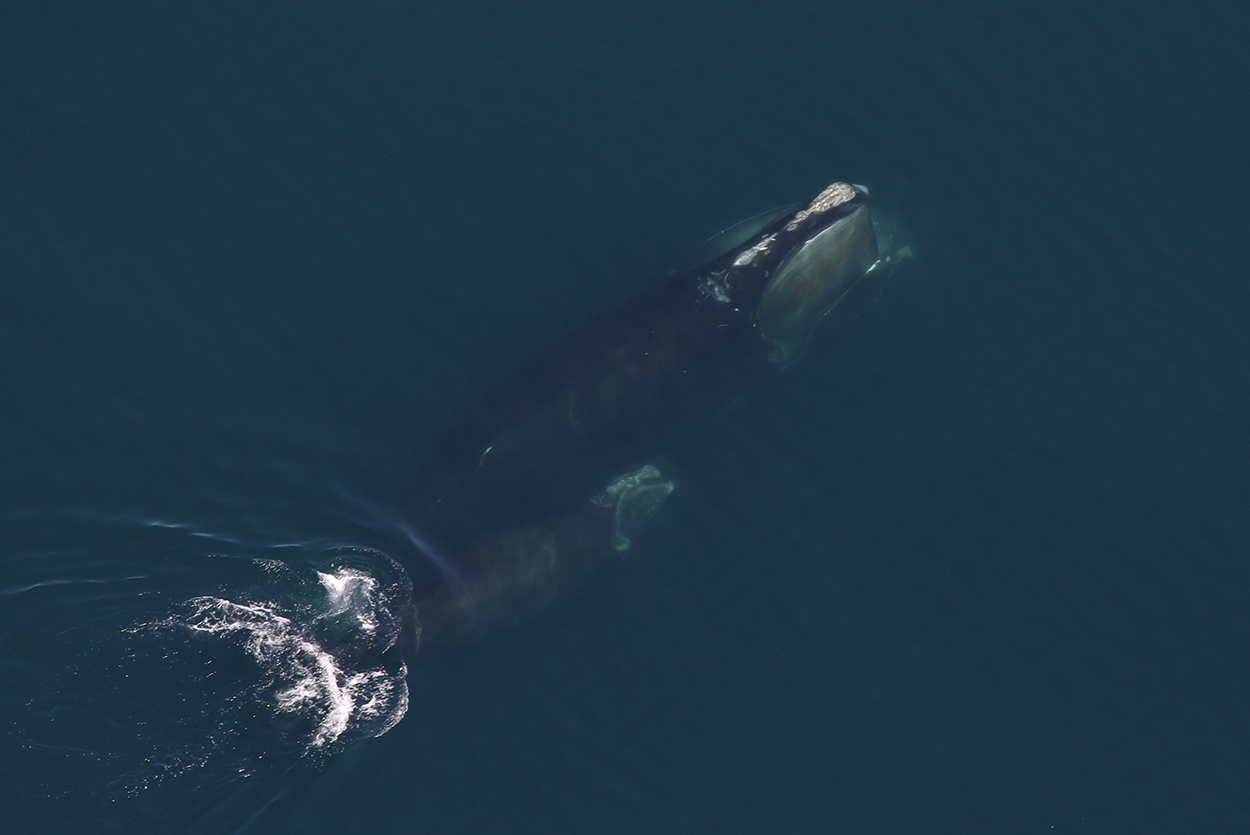
The critically endangered North Atlantic right whale population has continued to gradually increase, rising again in number according to estimates from the North Atlantic Right Whale Consortium. After reaching a low of 358 individuals in 2020, the upward trend is encouraging for scientists, who emphasized that continued protections are needed to continue growing the population.
At their annual meeting each October, the North Atlantic Right Whale Consortium releases the annual population numbers for the species using the most up-to-date data, including an estimate for the most recent year as well as updated numbers for previous years.
The estimate for 2024 is 384 (+10/-9 for range of error), representing a 2.1 percent increase in population size from the 2023 estimate, which was recalculated as 376 (+4/-3).
“The whales are doing their part,” said Philip Hamilton, senior scientist at the Aquarium’s Anderson Cabot Center for Ocean Life. “It is up to us to do ours by continuing to mitigate human-caused mortality and injury and allow the population to grow.”
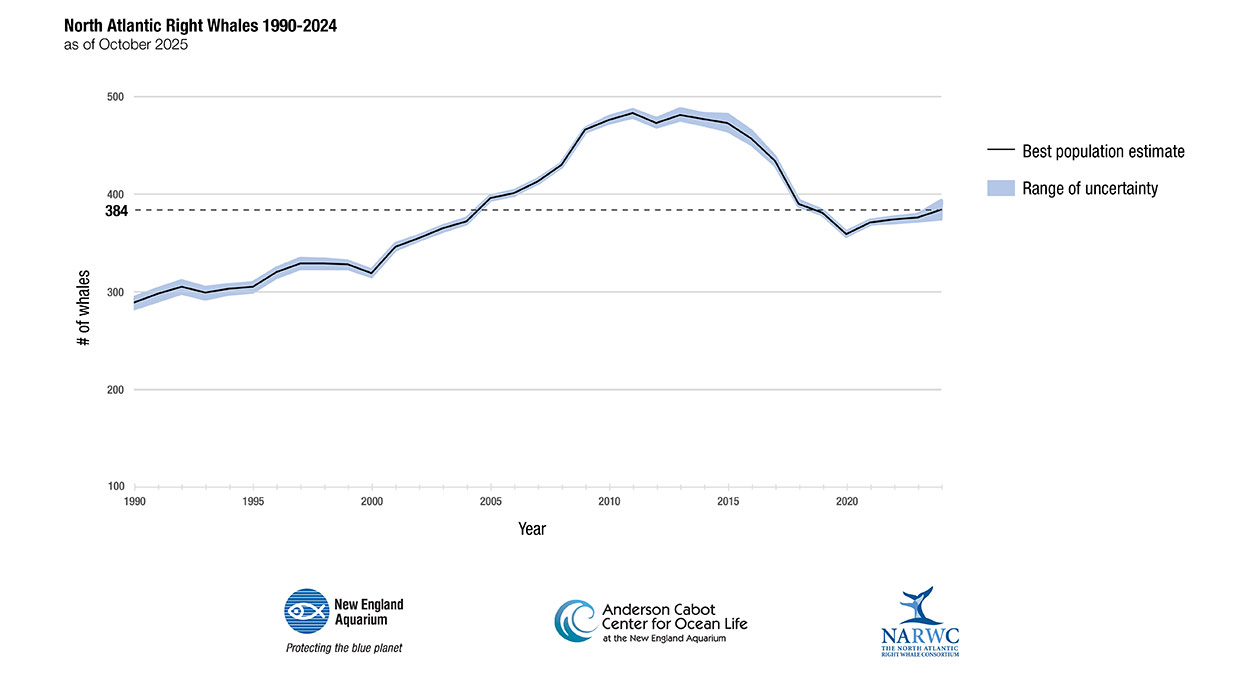
Right whale mortalities
In 2025, there were no detected right whale mortalities. It’s undoubtedly positive news, and underscores the need for continued protection of the species range-wide.
“We don’t want to take our foot off the gas when it comes to management and conservation efforts,” said Heather Pettis, scientist and chair of the Kraus Marine Mammal Conservation Program at the New England Aquarium’s Anderson Cabot Center. “Of course, we’re happy to see there were fewer injuries and deaths—especially compared to last year, when there were an alarming number of mortalities, including four reproductive females. But with small population increases year to year, we still need strong protective measures for continued growth.”
Human impacts
In 2025, researchers also documented far fewer injuries to right whales. There was one recorded entanglement without trailing gear and one vessel strike. However, they noted that, in 2024, an additional four major injuries were detected after the Consortium’s October meeting. “Time will tell whether or not these numbers are an accurate reflection of the true rates,” said Philip
“More than half of the 2024 entanglements were detected late in the year, some far from shore,” Philip said. “This underscores the need for continued collaboration with the state, federal, and private entities that survey right whales throughout US and Canadian waters.”
Two of the entangled whales sighted in late 2024 were seen again in 2025, with lingering entanglements still detected. That included Catalog #5110, a severely entangled whale that was seen in Cape Cod Bay this past spring. Despite mounting a disentanglement effort, responders were unable to fully remove the lines around his mouth. It’s a sobering reminder that, while reports of new injuries are low in 2025, right whales face persistent challenges to their survival.
However, after 2024’s high number of injuries—including 16 entanglements, with 10 of them carrying gear—our scientists are breathing a small sigh of relief.
“It’s always a great feeling when we can share positive news when it comes to this critically endangered species,” Heather said. “The slight increase in the population estimate, coupled with no detected mortalities and fewer detected injuries, leaves us cautiously optimistic about the future of North Atlantic right whales.”
Right whale calves
Each year, the right whale scientists at the Aquarium’s Anderson Cabot Center help identify new right whale mothers and maintain a detailed list of right whale mother-and-calf pairs, complete with family histories for each calf.
During the calving season from December 2024–March 2025, 11 calves were born. While this was fewer calves than hoped for, there were a few bright spots: this year’s group included four first-time mothers, and several had relatively short calving intervals of four years between births. There were also no known mortalities of calves, compared to five of the 20 calves born last year.
The last new calf sighted this year came as a bit of a surprise. Monarch (Catalog #2460) was first spotted with her calf by the Center for Coastal Studies in Cape Cod Bay in April—far from the traditional calving grounds off the southeast US coast.
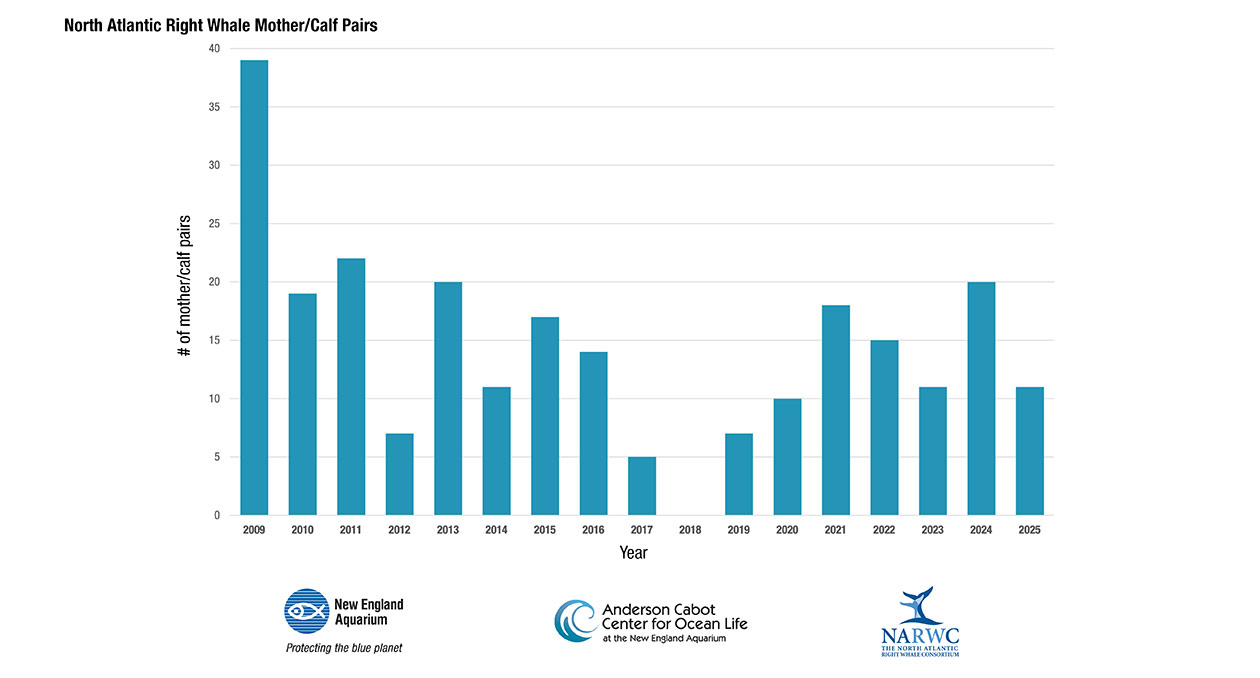
About the North Atlantic Right Whale Consortium
Started in 1986 as a collaborative data-sharing group, with the New England Aquarium as a founding member, the North Atlantic Right Whale Consortium includes research and conservation organizations, shipping and fishing industries, technical experts, US and Canadian government agencies, and state and provincial authorities, all of whom are dedicated to the conservation and recovery of the North Atlantic right whale. The Consortium is internationally recognized and has been identified as a model for establishing other species-related consortia.

